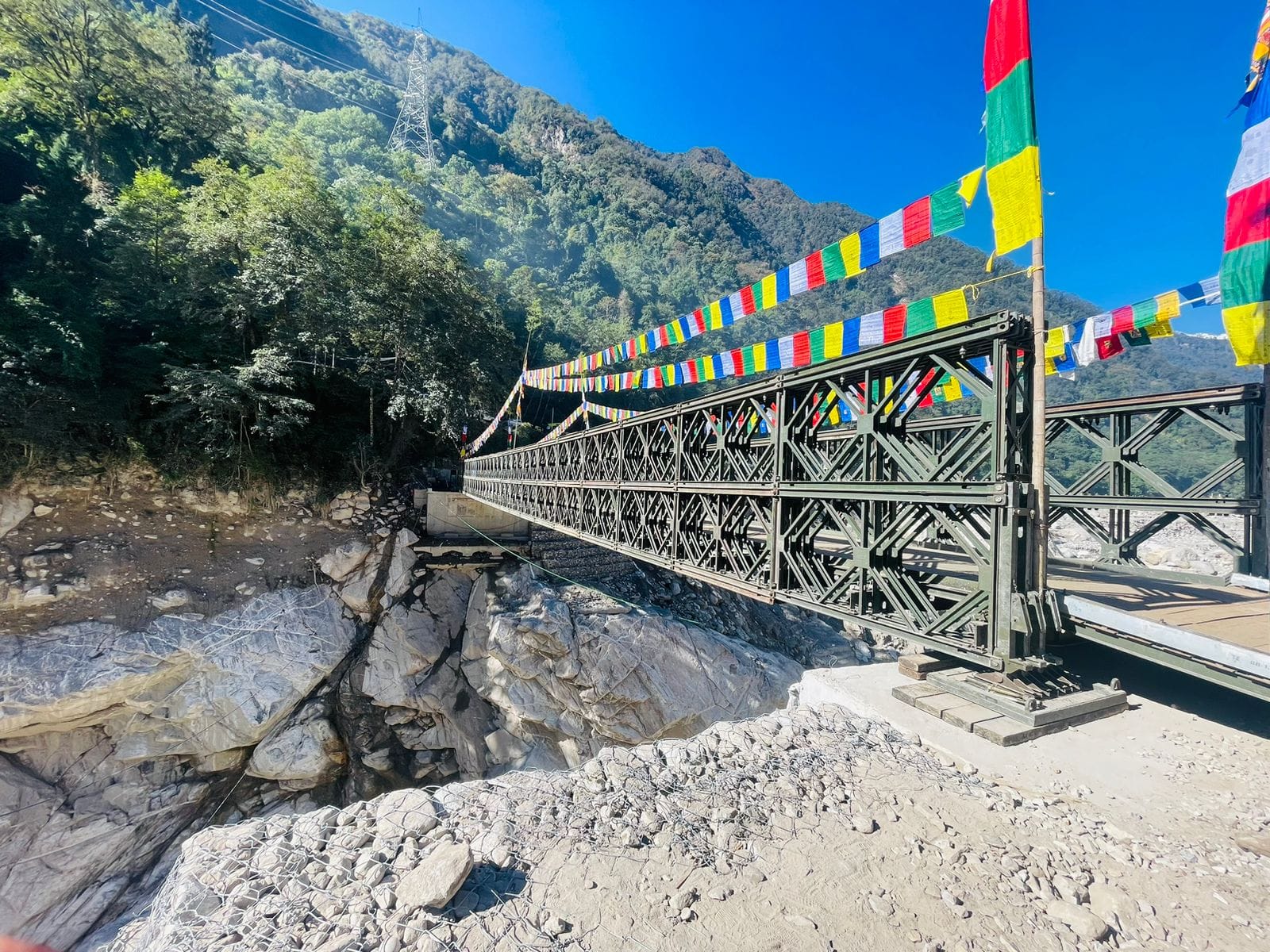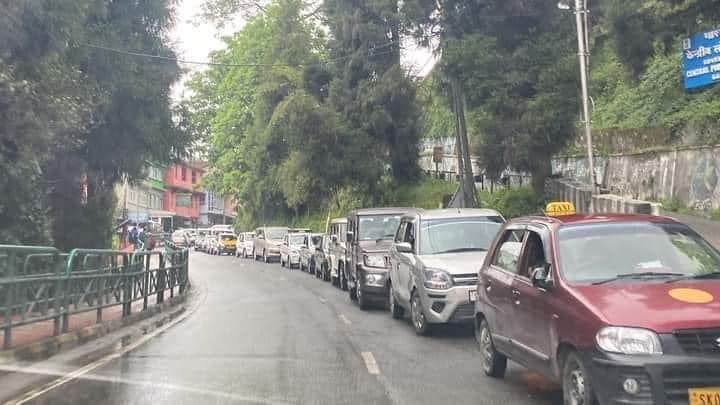
Pakyong, November 16 : The Trishakti Corps of the Indian Army, in partnership with the Border Roads Organization (BRO), has successfully concluded the assembly of a Bailey bridge spanning the Teesta River in Chungthang, North Sikkim. This vital infrastructure had been swept away in the aftermath of a glacial lake outburst flood (GLOF) from Lhonak Lake upstream, disrupting the connection between North Sikkim and the mainland on October 3.

The newly erected bridge, serving as a lifeline for Lachen and Lachung Valley in North Sikkim, is poised to facilitate smooth vehicular movement and the transportation of relief materials to the flood-affected regions, according to a statement from the Ministry of Defence.
The construction process involved the Border Roads Organization initially crafting concrete abutments, followed by the Trishakti Sappers undertaking the bridge construction over a span of approximately five days. Engineer Troops from the Trishakti Corps collaborated with the BRO, deploying various heavy Earth Moving plants for the successful execution of this bridging operation.
“While the World around celebrates, troops of #TrishaktiCorps continue to #RebuildAndReconstruct. Another Bailey Bridge over Teesta being constructed by the Engineers of #IndianArmy along with BRO to reconnect areas cut off during #GLOF. The launch operations commenced on 10th Nov. Showcasing Indian Army’s motto of ‘Service Before Self’ & professionalism, the troops are working 24/7. The construction of the 200 feet long bridge will be completed soon,” the Trishakti Corps said on Tuesday in its post on X.
The state minister of roads and bridges, Samdup Lepcha, presided over the re-inauguration of the bridge, alongside officials from the Indian Army, Border Roads Organization (BRO), and the civil administration.
This 200-feet long bridge stands out as an engineering marvel, being the longest and heaviest single-span Bailey bridge that can be launched.
In a noteworthy achievement on November 9, the Trishakti Corps, in collaboration with officials from the telecommunications company Airtel, successfully reinstated communication networks in the Lachen Valley of Sikkim.
History Of Bailey Bridge
A Bailey Bridge is a type of portable, pre-fabricated truss bridge designed for rapid assembly and disassembly. It is named after the British engineer Sir Donald Bailey, who developed the concept during World War II. The bridge consists of prefabricated panels that can be easily transported and assembled in various configurations to span different lengths and load capacities.
The key components of a Bailey Bridge include trusses, panels, transoms, and decking. Trusses are the main load-bearing members, while panels, usually made of steel, form the bridge’s surface. Transoms provide additional support, connecting the trusses, and decking provides the road surface for vehicles and pedestrians.
One of the notable features of the Bailey Bridge is its versatility. It can be quickly assembled using minimal equipment and manpower, making it suitable for military applications, disaster relief, and temporary crossings. The modular design allows for customization based on specific requirements, and the bridge can be launched from one side of the gap it is intended to cross.
Bailey Bridges have been widely used in various parts of the world for emergency situations, infrastructure development, and military operations. They have played a crucial role in providing temporary solutions for transportation challenges, particularly in areas where conventional bridges are impractical or too time-consuming to construct.






